Sausage Tree
- November 15, 2024
- 0 comment
The Sausage Tree, scientifically known as Kigelia pinnata, is a distinctive and ecologically valuable tree found across parts of Africa. Named for its large, sausage-shaped fruits, this tree plays a critical role in its ecosystem, providing shelter, food, and ecological stability in the regions where it grows.
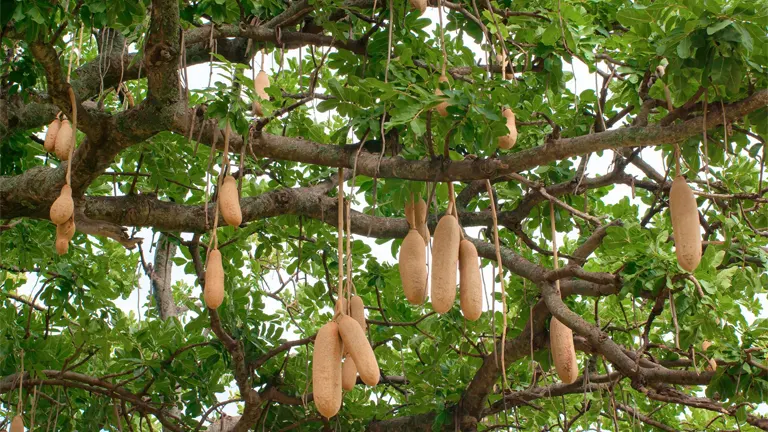
Belonging to the Bignoniaceae family, Kigelia pinnata is highly regarded for its unique physical attributes and for supporting biodiversity, including numerous animal species and local flora.
What Is a Sausage Tree?
The Sausage Tree (Kigelia pinnata) is a deciduous tree that can grow up to 20 meters in height and is commonly recognized by its thick, cylindrical fruits that can reach up to 1 meter in length. It has a smooth, gray bark that roughens as it matures, and its leaves are compound, growing in clusters with multiple leaflets.
The Sausage Tree is native to tropical Africa, thriving along riverbanks and savannas, and is celebrated for its vibrant, reddish-purple, trumpet-shaped flowers that bloom at night. These flowers attract various nocturnal pollinators, making it an essential part of the region’s biodiversity.
Interesting Facts
- The Sausage Tree’s fruit can weigh up to 10 kilograms (22 pounds) and is inedible for humans unless processed, though it serves as food for some wildlife.
- Traditional African medicine values the tree for its reported anti-inflammatory and healing properties, particularly the fruit and bark extracts.
- Due to its ability to enhance soil health and stabilize riverbanks, the Sausage Tree is an important species for environmental conservation.
Two Different Types of Sausage Tree Species
Though Kigelia pinnata is the primary species referred to as the Sausage Tree, several varieties have been identified based on geographic region and habitat:
Kigelia Moosa
Found in more arid environments, this smaller variety is more drought-resistant and often has a thicker bark.
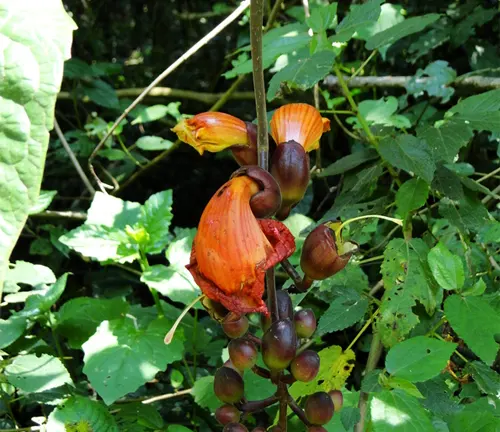

Kigelia Pinnata Var. Simplex
This variant has unique leaf structures adapted to high-altitude regions.
These varieties play a pivotal role in each unique habitat, offering soil stability, supporting biodiversity, and adapting to regional climatic challenges.
Where Do Sausage Trees Grow?: Ecological Role
Sausage Trees are native to sub-Saharan Africa and are particularly abundant in countries like Tanzania, Zimbabwe, and Mozambique. They naturally grow in riverine and savanna environments, where their large canopies provide essential shade. Their adaptability to a range of climates, from tropical to arid, allows them to thrive in diverse environments, contributing to soil stabilization and serving as a natural habitat for various animal species.
In its native habitat, the Sausage Tree helps prevent soil erosion along riverbanks and offers shelter to small animals. Additionally, it creates a microhabitat for various insects and bird species, which depend on its leaves and flowers for food and nesting sites.
How to Grow and Care for a Sausage Tree
Growing a Sausage Tree can be rewarding but requires specific care due to its size and unique requirements:
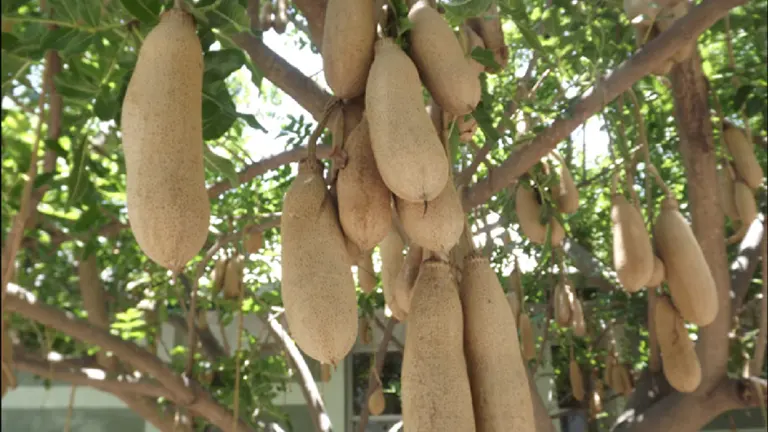
- Soil: Well-drained, fertile soil is ideal. Slightly acidic to neutral soil pH is preferred.
- Sunlight: Full sunlight is essential for healthy growth.
- Watering: Regular watering is necessary, especially in dry seasons, but it is crucial to avoid waterlogging.
- Propagation: Sausage Trees can be propagated from seeds, which should be soaked and planted in fertile soil. Germination can take several weeks.
- Maintenance: Pruning the tree helps manage its size and shape, while organic fertilizers enhance its growth.
For pest control, ensure proper spacing and monitor the tree for signs of fungal disease or infestations by insects like aphids.
Ecological Benefits of the Sausage Tree
The Sausage Tree offers numerous ecological benefits:
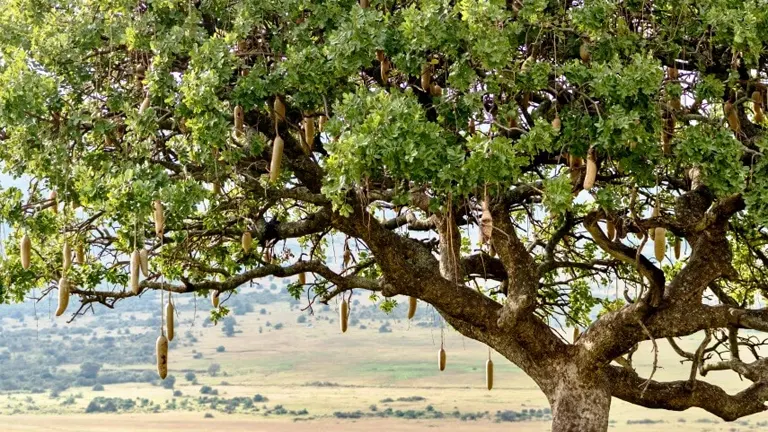
- Soil Quality Improvement: Its dense root system helps prevent soil erosion and improves soil health by retaining moisture.
- Habitat Provision: Various animals, including bats, birds, and mammals, use the Sausage Tree for shelter.
- Food Source: Although the fruit is not edible for humans without processing, animals like monkeys and elephants feed on the fruits, making the tree a vital part of the local food chain.
Sausage Tree Flowering and Pollination
The Sausage Tree blooms between spring and summer, producing large, trumpet-shaped flowers that open at dusk. The flowers are usually a rich red or maroon color, giving off a mildly unpleasant scent that attracts pollinators such as bats and insects. This unique pollination process is crucial for the plant’s reproductive cycle and also supports local pollinators, who rely on the nectar.
Is the Sausage Tree Drought-Tolerant?
The Sausage Tree is highly resilient and can survive extended periods of drought. This adaptability is due to its deep root system, which allows it to access water far below the soil surface. For those looking to cultivate it in arid regions, minimal but consistent watering during the dry season is key to ensuring growth and survival.
Sausage Tree and Wildlife Interactions
The Sausage Tree has a symbiotic relationship with many local animal species. Large herbivores, such as elephants and giraffes, feed on the leaves and fruit. Birds, insects, and bats rely on its flowers for nectar, contributing to pollination. The tree also provides habitat for smaller animals, like squirrels and birds, who nest within its branches. This intricate web of interactions highlights the Sausage Tree’s importance in maintaining biodiversity and ecological balance.
Conclusions
The Sausage Tree (Kigelia pinnata) is a fascinating and ecologically significant species that enriches its environment by supporting biodiversity, preventing soil erosion, and serving as a habitat for local wildlife. Its flowers, fruits, and roots play a critical role in maintaining ecosystem health, making it an invaluable asset to African landscapes. Conservation efforts to protect and preserve the Sausage Tree are essential for ensuring the health of these ecosystems and the diverse species that depend on this remarkable tree.
Frequently Asked Questions (FAQs)
- What is the Sausage Tree?
The Sausage Tree, Kigelia pinnata, is a tree native to Africa known for its large, sausage-shaped fruits and vibrant red flowers. It plays an important role in its ecosystem by providing food and shelter for various animals. - Why is it called the Sausage Tree?
It’s named for its distinctive, sausage-shaped fruits, which can grow up to 1 meter long and weigh up to 10 kg. Although the fruits are inedible for humans, they are an important food source for local wildlife. - What are the ecological benefits of the Sausage Tree?
The Sausage Tree helps prevent soil erosion, improves soil quality, and provides a habitat and food for animals like elephants, monkeys, and bats. It also supports pollinators with its large, nectar-rich flowers. - Can the Sausage Tree survive in drought conditions?
Yes, the Sausage Tree is drought-tolerant due to its deep roots, which access groundwater during dry seasons, making it resilient in arid climates. - How does the Sausage Tree attract pollinators?
Its large, night-blooming, red flowers emit a scent that attracts bats and insects, which help with pollination. This process is essential for the tree’s reproduction and supports local wildlife. - How can you grow a Sausage Tree in a home garden?
The Sausage Tree needs full sunlight, well-drained soil, and regular watering. Propagation is possible through seeds, and it’s important to prune and monitor for pests to maintain a healthy tree.
We hope this guide has highlighted the unique ecological and cultural importance of the Sausage Tree (Kigelia pinnata). Have experiences with the Sausage Tree or ideas for its conservation? Share your thoughts below to help others appreciate this remarkable species and support biodiversity. Don’t forget to share this guide with others who care about preserving nature.


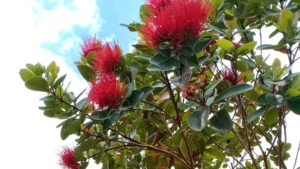
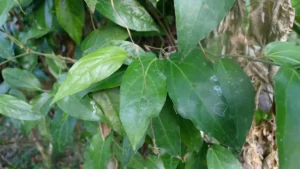
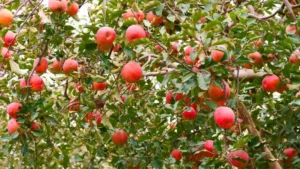
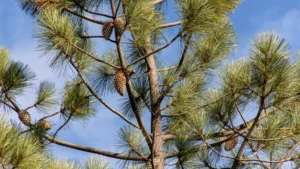

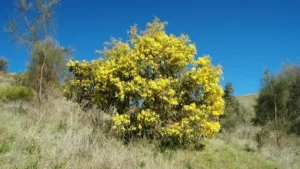
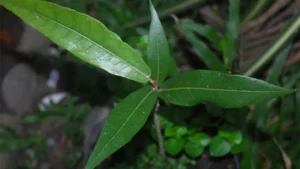
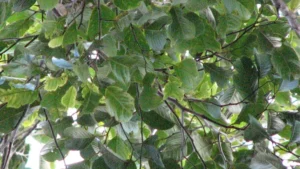
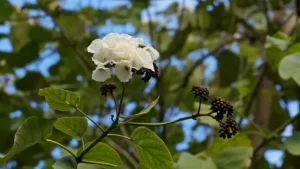
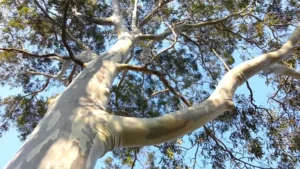

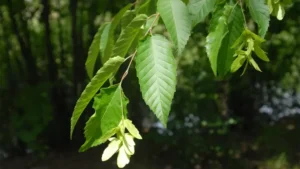
Leave your comment